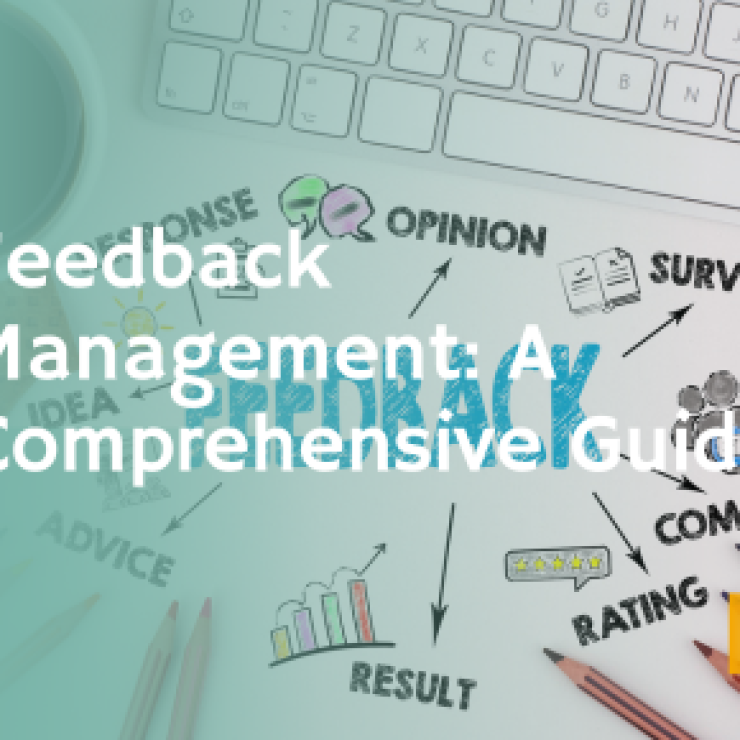Navigating the competitive terrain of today’s business world requires a thorough understanding of customer satisfaction. Successful companies consistently monitor how their customers view and engage with their products or services.
A popular, reliable metric often employed to evaluate customer satisfaction is the Net Promoter Score (NPS).
Due to its straightforwardness, effectiveness, and the valuable insights it provides, NPS has gained significant acceptance across a multitude of industries.
What is Net Promoter Score(NPS)?
NPS, or Net Promoter Score, is a customer loyalty metric developed by Fred Reichheld, Bain & Company, and Satmetrix in 2003. It measures customers’ willingness to recommend a company’s products or services to others. It provides insight into customer loyalty and satisfaction, serving as an indicator of business growth potential.

The NPS system works by asking customers one simple question: “On a scale of 0-10, how likely are you to recommend our company/product/service to a friend or colleague?” Customers are then grouped into three categories based on their responses:
- Promoters (score 9-10): These are loyal enthusiasts who will keep buying and refer others, fueling growth.
- Passives (score 7-8): These are satisfied but unenthusiastic customers who are vulnerable to competitive offerings.
- Detractors (score 0-6): These are unhappy customers who can damage your brand and impede growth through negative word-of-mouth.
The Net Promoter Score is then calculated by subtracting the percentage of Detractors from the percentage of Promoters. The final score can range from -100 (if every customer is a Detractor) to 100 (if every customer is a Promoter). A positive NPS (>0) is generally viewed as good, and an NPS of >50 is excellent.
NPS is a powerful tool as it not only provides a quantitative measure of customer loyalty and satisfaction but also provides qualitative insights from the follow-up questions like “Why did you give this score?” These insights can help businesses identify areas of improvement to enhance their customer experience.
Understanding NPS
The Process of Calculating NPS
Calculating the Net Promoter Score involves a simple equation. First, calculate the percentage of responses that fall into each of the three categories (Promoters, Passives, and Detractors). The NPS is then calculated by subtracting the percentage of Detractors from the percentage of Promoters:
NPS = %Promoters – %Detractors
The result is a score that can range from -100 (if every customer is a Detractor) to +100 (if every customer is a Promoter). Passives are not included in the calculation, though they do contribute to the overall number of respondents, which will affect the percentages of Promoters and Detractors.
Importance of NPS in Customer Satisfaction and Business Growth
The Net Promoter Score serves as a valuable measure of customer sentiment and is strongly correlated with business growth. Here’s why NPS is so important:
- Customer Retention: Promoters, who are the most satisfied customers, are likely to stay loyal to your brand, leading to higher customer retention rates.
- Customer Advocacy: Promoters are also more likely to recommend your brand to others, effectively becoming advocates for your business.
- Business Growth: Research has shown a correlation between high NPS and business growth. Companies with high NPS scores tend to see greater customer retention and referral rates, both of which can fuel business expansion.
- Customer Feedback: The open-ended follow-up question often associated with NPS (“Why did you give that score?”) provides qualitative insights into what you’re doing well and where you can improve.
Types of NPS Scores
Exploring Promoters, Passives, and Detractors
Within the Net Promoter Score (NPS) system, the responses from customers fall into three categories, based on their score: Promoters, Passives, and Detractors.
Promoters (Score 9-10):
These are your most loyal customers. They are highly satisfied with your service or product and are not only likely to continue their business with you but are also most likely to recommend your brand to others.
This recommendation can take the form of word-of-mouth marketing, online reviews, and social media promotion, which are powerful tools for organic growth.
Passives (Score 7-8):
Passive customers are those who are generally satisfied with your service or product but lack enthusiasm. They might not have had any negative experiences, but they also don’t feel a strong connection to your brand.
While they aren’t spreading negative feedback, they’re not actively promoting your brand either. They are also more susceptible to switch to competitors if given a better offer.
Detractors (Score 0-6):
Detractors are customers who are unhappy with your service or product. They’re likely to share their negative experiences with others, which can damage your brand’s reputation.
Detractors can influence potential customers to avoid your brand and can even discourage existing customers.
Explanation of How These Categories Impact the Overall NPS
The Net Promoter Score is determined by subtracting the percentage of customers who are Detractors from the percentage of customers who are Promoters. The Passives are left out of this calculation, though they do count towards the total number of respondents, influencing the percentages of both Promoters and Detractors.
Promoters play a significant role in boosting your NPS as they represent satisfied customers who can bring new business to your company through recommendations. They are the driving force behind positive word-of-mouth marketing.
Detractors, on the other hand, decrease your NPS. They represent an area of your customer base that has had unsatisfactory experiences with your brand. Their negative feedback can harm your reputation and deter potential customers.
Passives have a neutral effect on your NPS. While they do not directly impact the score, a high number of Passives may indicate that your company is not inspiring strong feelings—positive or negative—in many of your customers. This can be a signal that there’s room to create more meaningful, positive interactions that can convert Passives into Promoters.
How to Use NPS to Gauge Customer Satisfaction
A. Designing an Effective NPS Survey
To obtain meaningful and accurate data through NPS, designing an effective survey is the first critical step.
While the central question of the survey remains constant, “On a scale of 0-10, how likely are you to recommend our product/service/company to a friend or colleague?”, it’s crucial to add an open-ended follow-up question such as “Why did you give us this score?” to understand the reasons behind the score. This helps gain qualitative insights and identify areas of improvement.
Make sure the survey is short and straightforward to encourage a higher response rate. Keeping the language simple and clear helps ensure customers understand the questions and provide honest feedback.
B. Deploying the NPS Survey
Deciding when and how to deploy your NPS survey can significantly impact the response rate. Surveys can be sent via various channels such as email, SMS, in-app notifications, or even embedded on your website. Choose a method that aligns best with your customer interaction model.
Timing is also crucial. For instance, if you’re a software company, sending the survey shortly after a significant product update can provide valuable feedback on new features.
Remember, too frequent surveys can cause fatigue, leading to lower response rates or skewed results.
C. Interpreting and Analyzing NPS Survey Results
Once you have collected the responses, it’s time to calculate your NPS by subtracting the percentage of Detractors from the percentage of Promoters. Remember, a positive NPS (>0) is generally good, an NPS of >50 is excellent, and an NPS of >70 is considered world-class.
However, don’t just focus on the score. Dive deeper into the reasons given by Promoters, Passives, and Detractors.
Identify common themes and areas for improvement. Promoters’ feedback can highlight your strengths, Passives’ responses can reveal areas that aren’t bad but could be improved, and Detractors can shed light on where your product or service may be falling short.
D. Using Feedback to Improve NPS and Customer Satisfaction
Once you’ve understood the reasons behind your NPS, it’s time to take action. Prioritize the most common or critical issues highlighted by your customers.
Develop a roadmap for addressing these issues and communicate this with your customers to show that their feedback is valued and acted upon.
Continuously monitor your NPS to understand if the changes you’ve implemented are improving customer satisfaction. Remember, improving NPS should be an ongoing effort, not a one-time initiative.
Common Mistakes to Avoid When Using NPS
Discuss Potential Pitfalls and Mistakes Companies Often Make When Using NPS
While NPS is a valuable tool for gauging customer satisfaction, companies can sometimes make mistakes that undermine the effectiveness of their NPS surveys and skew the results. Here are some common errors:
- Ignoring the ‘why’: Many companies make the mistake of focusing solely on the numerical score and ignore the follow-up open-ended question. However, the real value lies in understanding why customers gave a specific score.
- Not segmenting data: Companies often treat NPS as a uniform metric without breaking it down into more detailed segments. Different groups of customers (like demographics, purchase history, product usage, etc.) may have distinct feedback, and segmenting can provide more nuanced insights.
- Over-surveying: If you’re constantly sending out NPS surveys, it could lead to survey fatigue among your customers, causing lower response rates and potentially skewed results.
- Failure to act on feedback: One of the most significant mistakes is collecting feedback and then not taking action on it. This can frustrate customers who took the time to provide their input, thinking it would lead to improvements.
B. Tips on How to Avoid These Mistakes
Avoiding these common mistakes can greatly improve the effectiveness of your NPS initiative:
- Emphasize on the ‘why’: Encourage customers to provide comments and feedback along with their score to understand the reasons behind their rating.
- Segment your data: Break down your NPS by different customer segments to get a more detailed view of your customer satisfaction. It can help tailor your strategies to specific groups.
- Avoid over-surveying: Strike a balance between regularly checking in with your customers and avoiding survey fatigue. Use different methods and times to engage customers in feedback.
- Act on feedback: Use the feedback collected from NPS surveys to make real improvements in your business. Communicate these changes to your customers to show that you value their input.
Conclusion
Net Promoter Score can be an extremely powerful tool in understanding and enhancing customer satisfaction, leading to increased loyalty and business growth. By using it effectively and avoiding common mistakes, companies can get the most out of this metric.
Remember, the objective of NPS is not just to get a good score, but to gain insights and feedback that can help drive improvements and foster better relationships with your customers.




